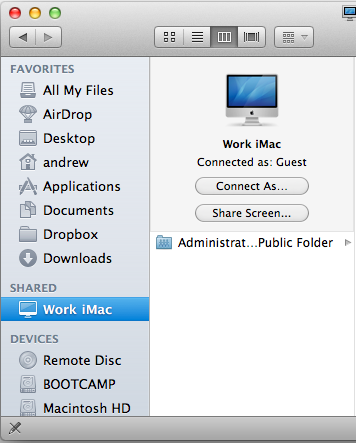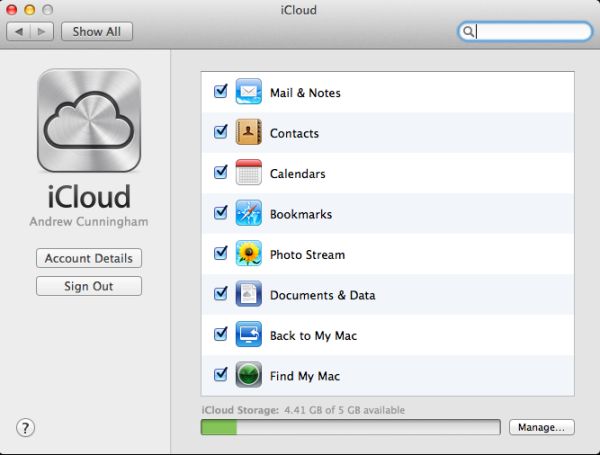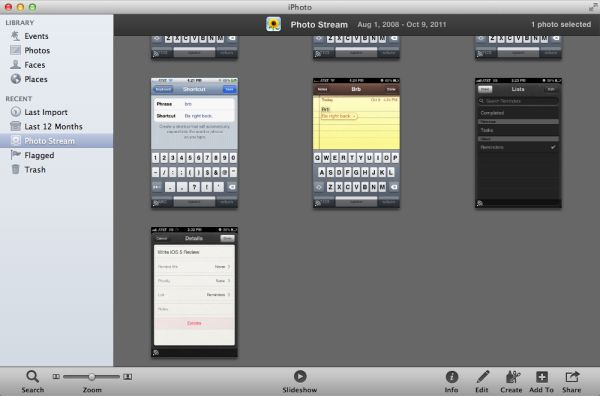iCloud on the Desktop: A Look at OS X 10.7.2 and iCloud for Windows
by Andrew Cunningham on October 18, 2011 3:01 AM ESTiCloud is included with the OS X 10.7.2 update, so Lion users out there will be able to pull it down through Software Update if they haven’t already (and even if you don’t intend to use iCloud, 10.7.2 is a major update that purports to fix many problems with the OS). Once you restart, you’re invited to enter or create an AppleID to associate with iCloud, and upon signing in you’ll see the iCloud preference pane for the first time.
There's nothing particularly interesting about the technology behind iCloud - its mail service uses a standard IMAP server, your calendar is hosted on a standard CalDAV server, and your contacts are served up by LDAP - all open and widely supported standards (meaning that, with the proper server configuration, you could get some of your iCloud data syncing with most OSes, albeit without the help of Apple's handy preference pane). As such, your iCloud accounts can easily co-exist alongside other IMAP or Exchange accounts without conflict, and using iCloud-enabled calendars in Mail and iCal feels the same as does with virtually any other service.
Novice users will appreciate the ability to access all of this using a single sign-in, but just about everybody reading this article doubtlessly has a setup that works for them already (Gmail, Dropbox, and Chrome Sync, for myself). There's nothing about these services in iCloud that's compelling enough to make a contented Gmail user switch, and there are indeed some reasons not to, including the fact that email storage space comes out of the same 5GB pool as everything else.
Other iCloud services are of a bit more interest to people who already have email accounts and calendars, though again little of it is truly new. Find My Mac is an extension of the Find My iPhone tool, which can be used to locate, lock, or remotely wipe a misplaced or stolen device - we'll talk about how it works a bit later when we discuss iCloud.com.

Back to My Mac, a MobileMe import, uses OS X’s built in Screen Sharing and FIle Sharing functionality to share the screen and the files of two Macs on two different networks. You can limit or expand its functionality by enabling, disabling, and configuring the Screen Sharing (or Remote Management) and File Sharing services as you see fit - it's one of the few iCloud services that needs some extra configuration after you turn it on. Once you have two Macs connected to an iCloud account with the same Apple ID, they will show up in each others’ Finder sidebars under Shared, which allows for easy screen and/or file sharing based on how you’ve configured them. Back to My Mac uses IPsec to encrypt data sent over the Internet, and uses Kerberos with Digital Certificates for secure authentication.
Photo Stream interfaces with iPhoto 9.2 - current iLife '11 users should be able to pull this update down through Software Update or the App Store now. You can view all your Photo Stream photos within iPhoto, but you can't directly manipulate them without downloading them to your local library. Once you've done that, you can drag the photos back to your Photo Stream to re-upload them.As on iOS, the main issue with Photo Stream at the moment is that there's no easy way to delete individual photos from iPhoto or from any of your iOS devices at present. Even if you locate and delete the pictures in the filesystem, that still doesn't delete them from all of your devices (though I do think I broke something on my Windows box - after deleting the photos from the filesystem, I couldn't make them download again without completely trashing the iCloud preferences and starting over again).
There are two ways to delete everything: the first is to disable and then re-enable Photo Stream on all of your devices, and the second is to sign into iCloud.com and wipe it all out in the Advanced settings panel. I'm hoping that Apple implements the ability to delete individual photos from Photo Stream soon, because at the moment it seems like a big downside to a pretty useful feature.












16 Comments
View All Comments
felipeb8 - Tuesday, October 18, 2011 - link
I think this is a vast improvement over their previous cloud offering (MobileMe) but basic functionality is still missing from iCloud.For example, how can I delete pictures from photostream ? I can't.
So if I took dozens of bad pictures and one good picture on my iPhone I'm stuck with copies of all pictures in all my computers until I either reset photostream or the 30 days expire the photos.
Samoht - Tuesday, October 18, 2011 - link
The fact that photostream is not supported on os x 10.6 is just stupid. I can't access my photos from my iphone on my mac unless I boot it up in win 7! And there is no web service for photos, so I can't casually show my images to friends and family, which I thought was the whole point of the service. Apple has completely misunderstood the concept of the cloud!IceDread - Tuesday, October 18, 2011 - link
Good review but the product sure is not of interest for me.I do not like how apple tries to lock me in and I also find these prices for storage to be very much to high.
So no thanks, I'm happier without apple in my life.
all_is_well_in_nj - Tuesday, October 18, 2011 - link
iCloud freezes the crashes all instances of IE in Windows XP... that to say: logged into iCloud ok, clicked on "contacts" at which point CPU usage by iexplore.exe (IE) on my Windows XP machine goes to 100% (also: a warning about script using a lot of CPU shows up). Let it work for a good 5 minutes trying to display maybe a 100 entry contact list. Finally I "X" the window from the task tray... and ALL OTHER IE windows also disappear. Not for prime time - at least in this environment.all_is_well_in_nj
www.BambooHollow.com
Andrew.a.cunningham - Tuesday, October 18, 2011 - link
Officially, Windows XP isn't supported - you're probably having problems because the software wasn't tested against your operating system.See: http://support.apple.com/kb/DL1455
Guspaz - Tuesday, October 18, 2011 - link
That's just the control panel, not the web interface. The web interface doesn't work on Chrome on Windows 7, for example; Find My iPhone just displays a map, for example, with no list of devices or location displayed. Safari on Win7 had no such issues.Andrew.a.cunningham - Tuesday, October 18, 2011 - link
Ah! Well that's weird, since it works fine in Chrome on other platforms. What about Safari on XP?marc1000 - Tuesday, October 18, 2011 - link
and again, microsoft does the stupid thing. they had a perfectly working system of sync between their "old" phones and a web-site (myphone, wich worked on windows mobile 6.x). it saved ALL the content from the phone and made it available on a single site (even SMS's and contact pictures). it should be fairly easy to create some desktop app to sync with this site.but NOOOOO, they decided to kill the fracking service altogheter. make windows phone 7 NOT work with it, then block the site and disable sync. by today they have completely shut-down the service.
now they will restart from scratch and maybe 5 years from now we will have a cloud-storage competitor from MS for this iCloud stuff....
B3an - Tuesday, October 18, 2011 - link
Come out your of cave once in while.WP7.5 / Mango already has many cloud services and integration with SkyDrive which gives you 25GB free, and it's better than what Win Mobile ever had. The 25GB essentially becomes a part of your phones memory. This is Apple playing catch up to both Google and MS. And as usual Apple have done a poor job of it, while at the same time idiots like you are falling for there advertising.
marc1000 - Tuesday, October 18, 2011 - link
just to be clear: I'm NOT an user of any Apple product. i believe their product is marketing, not actual phones/players/pcs/anything.and I'm trying to update myself too: after 3 months owning an android 2.3 phone, my best impression is that it is like Windows 95 for phones. full of bugs and you need deep knowledge to adjust anything it.
skydrive is a good name, but it wont sync HALF the stuff myphone did. with that aging service i could completely wipe my device and after entering 1 id/password, have ALL of its contents restored. not just music/pic/videos/contacts, but also SMS/notes/contact images/contact notes/browser bookmars/application list (you had to re-download them tough, but they were pre-marked). wm 6.5 was the easiest OS to format and haver your phone fully restored in a matter of minutes. you could even change your phone and migrate all your content to another pain-free.
MS is re-inventing the wheel this time.
anyway, i still can't trhow away my wm 6.5 phone because of a fraking corporate app that only works in it. it does NOT work on either iOS, Android or WP7 because none of these OSes is able to call an executable file passing another file as parameter (like windows CE / wm6.x does). this is NOT what i want, just to be crystal clear.